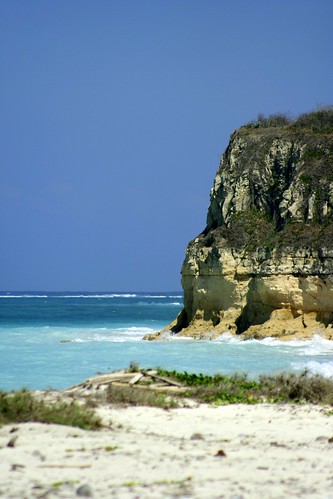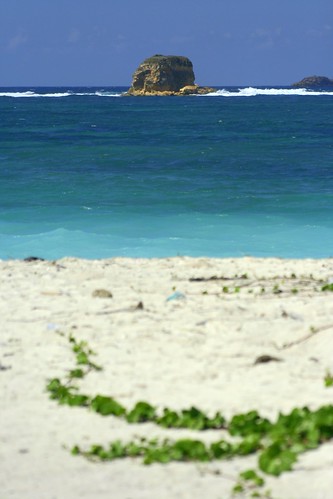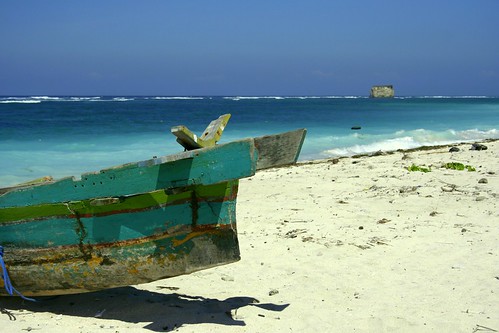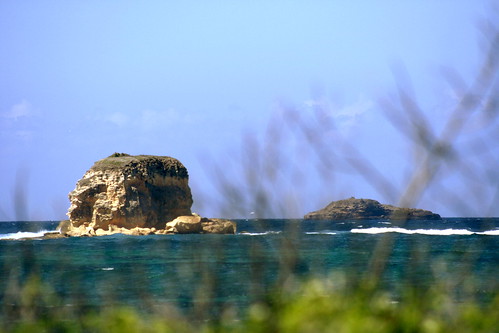a cacing legend in Kaliantan
the heavenly beaches of East Lombok- part 5
continued from part 1, part 2, part 3 and part 4
Kaliantan, aside from boasting of one of Lombok’s best beaches also is one of the hosts of the island’s more popular festival, the Bau Nyale.
Canon EOS 350D Digital, 1/1600s, f/5.6, 270mm, ISO 100, -1/3EV
The festival recalls the legend of the princess Putri Mandalika. Beautiful and beloved by all, she had many suitors from different kingdoms. However, when it came to choosing a husband, she could not decide among her suitors. Her vacillation resulted to turmoil and strife among rivals. Her father King Kuripan ultimately gave her a deadline to choose a husband before sunrise. The next morning, Putri Mandalika, fearing a war, professed that she loved her parents and the people even more and in an act of self-sacrifice for the greater good, threw herself into the sea. It makes me think of Hans Christian Anderson’s The Little Mermaid, doesn’t it?
Canon EOS 350D Digital, 1/4000s, f/4.5, 105mm, ISO 100, -1/3EV
But there is a local twist. When everyone tried to scour the seas for the princess, they only discovered a mass of sea worms, called nyale in the Sasak language. Thus these worms became a traditional symbol of the Sasak people. (In Bahasa Indonesia, nyale is called cacing but or course!)
Yearly, the people of Lombok celebrate Bau Nyale which literally means “to catch the worms”. It takes place every tenth month of the Sasak calendar which often falls around February or March. This season is chosen as during this time, thousands of sea worms would spawn in the beaches.
Canon EOS 350D Digital, 1/1000s, f/6.3, 120mm, ISO 100
Celebrated with much fanfare, the festival is best appreciated at nighttime when fires are built on the beach, pameran stalls are set up and traditional Sasak dancing, singing and drama are held. The climax is catching the sea worms at dawn.
Another ritual is for the local priest or dukun to read the future rice harvest based on the number of sea worms, just as if they were a crystal ball, or tea leaves. Some sea worms would then be ground and scattered over irrigation channels in the rice fields to ensure a bountiful harvest.
Canon EOS 350D Digital, 1/1250s, f/8.0, 4.6mm, ISO 100, -1/3EV
Nyale are eaten raw or they can be steamed or fried. A local specialty is pepes nyale which are banana-wrapped rolls of ground worms with coconut and spices.
It is believed that the sea worms are a symbol of fertility. No wonder that young people also take to flirting with each other all throughout festival time, which is unusual in a conservative Muslim island like Lombok.
So cacing seaworms as aphrodisiac anyone? If not, there is always the fabulous beach.
Canon EOS 350D Digital, 1/2000s, f/5.0, 220mm, ISO 100, -1/3EV






2 comments:
Selamat Malam Farl
I know very well this area... I have made a magic meeting in Ekas fishing village with a fisherman (his job is both seaweed and lobster). I come back there each time I have holidays (I am from France), and I finally decided to buy a piece of land in this village. I am little afraid by the future "developments" there but anyway, let's wait and see... but I see now lands in Seriwe with crazy price !!
Seaweed is really a big change in the life of these people. May little brother (I mean the fisherman leaving here) has a much better life than before and we can say now that Ekas start to be... not rich but not so far... Each time I come back I see now houses and people happy...
You can have a look on my website www.lombok.tripod.com containing many photos and videos, but texts are in french sorry !
I hope to live one day there and meet you ;-)
Loic from France
loic@loic-paradise.com
Loic- thanks for sharing. I often frequent the Serewe and its vicinity fo the seaweed and I can see how the place is growing. and yes, the land prices are incredible! I'll check out your website. cheers.
Post a Comment